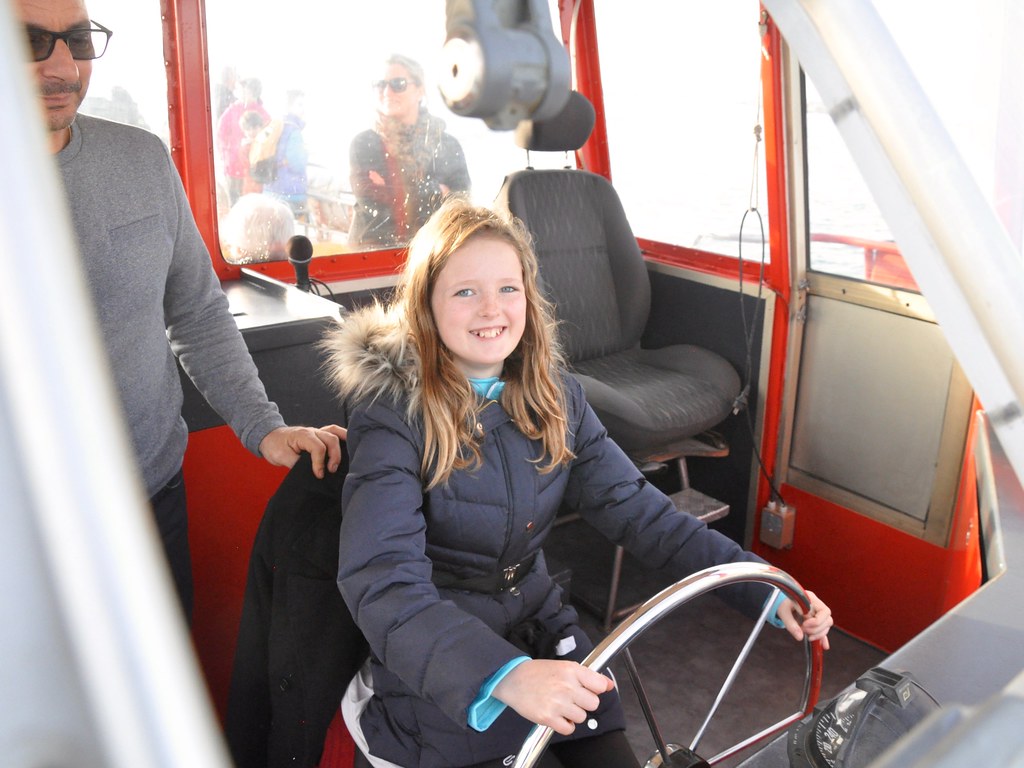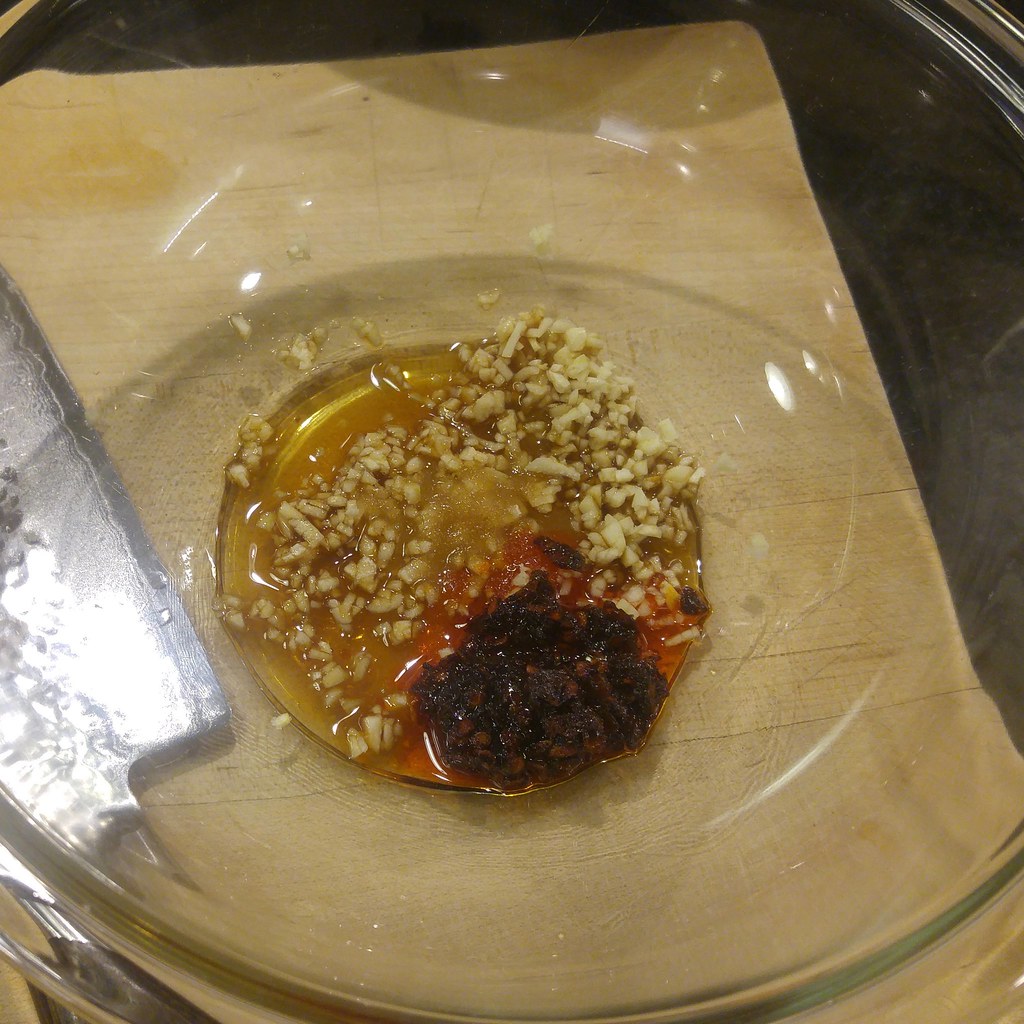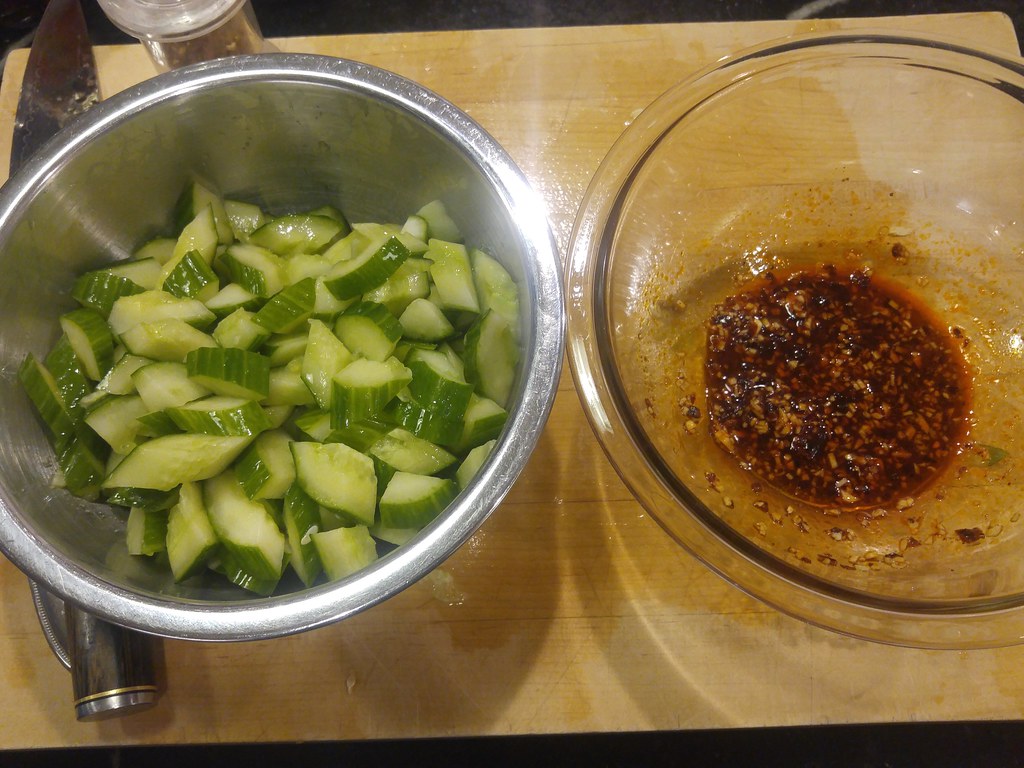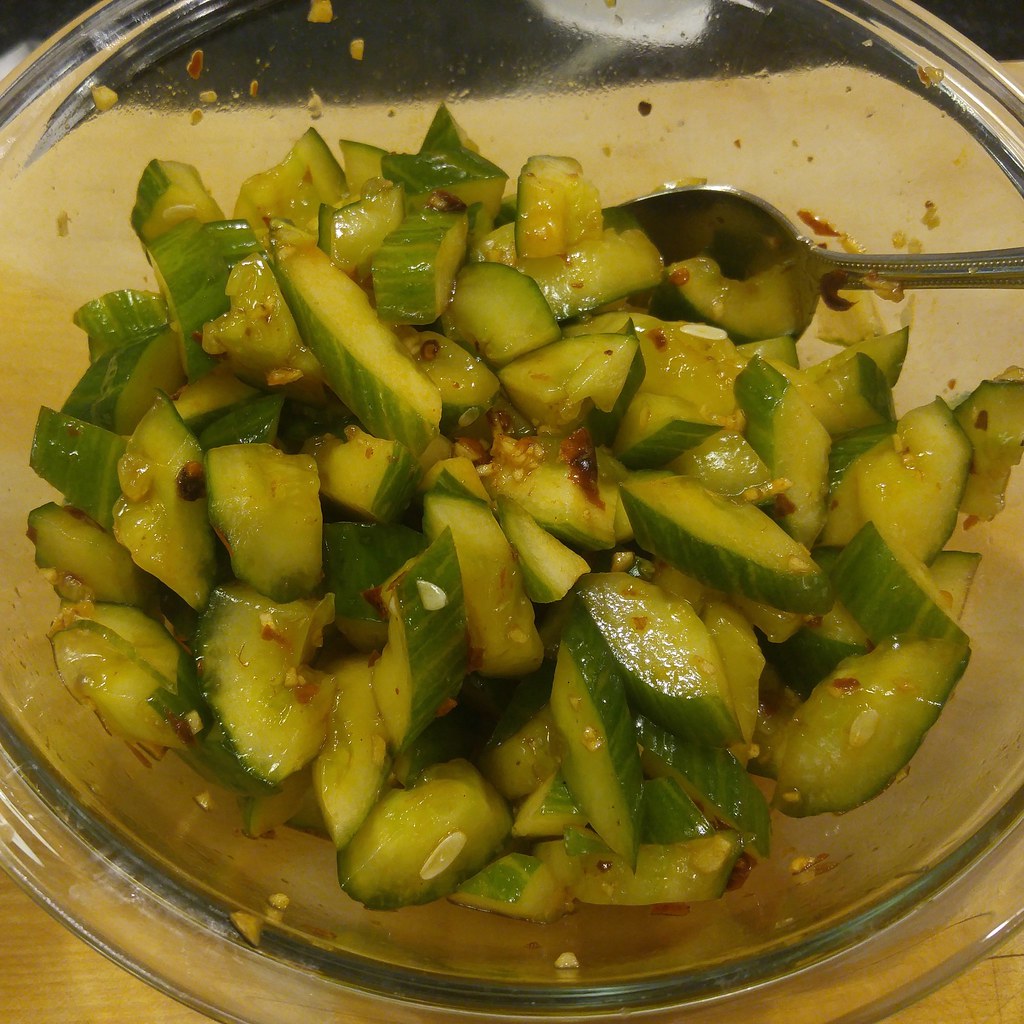Fuschia Dunlop's recipe for smacked cucumbers in garlicky sauce, from "Every
Grain of Rice", has changed the way my kids think about cucumbers. My youngest
asked me to make this dish for her birthday dinner tonight, and I was more than
happy to do it. It's delicious and fun and easy to make. I'm going to show you
how.
The first step is to assemble the sauce. Or dressing. Call it what you like.
I've been using one large garlic clove and 1/2 tsp of sugar per cucumber. To
this I add a teaspoon of crushed chilies fried in oil, soy sauce, and
a generous splash of vinegar or some other tangy liquid. My kids are sensitive
to Sichuan pepper, so I crank the grinder just a tiny bit.
Today I used some bottled Ponzu dressing, but I've also used rice or sherry
vinegar (or both). This chili oil has peanuts, which I'm careful to omit
because my kids do not love peanuts. Whatever: more peanuts for me!
After putting the dressing aside, it is time to smack the cucumbers. Contused
cucumis sativus may be a culinary cliché, but this technique is too good to
dismiss. It turns ordinary, hard, crunchy cucumber (not a bad thing) into
succulent, but not gross and slimy, mildly bitter melon. There's nothing to it:
you lay unpeeled thin-skinned cucumbers flat on a cutting board and swat them with the
flat of your chef's knife or cleaver just until they crack.
I scraped out the one seedy cucumber, quartered them both lengthwise, and then
chopped them diagonally. There's no point in trying to slice them into matching
1/8" thick pieces, smacked cucumbers don't give a damn about rules.
Toss the chopped cucumber with salt and let it rest for 20 minutes. The goal is
to get them to shed water so the sauce doesn't get diluted. These two cukes
gave up about 1/3 cup (80 ml) of liquid tonight.
When the time's up and you're ready to eat, drain the cucumbers, transfer to
the bowl of dressing, toss well, and serve along with other Sichuan dishes or
on top of buckwheat noodles.
















